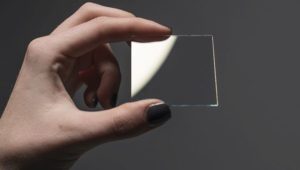How is it that glass is somehow able to be strong enough to withstand incredible amounts of weight yet fragile enough to break with relative ease at times? It’s all dependent on how the glass is tempered and it’s overall structure in the first place.
There are naturally occurring beings in the world that upon first glance appear to have a weak composition, but are actually much stronger than anything that can be created. “Many structural materials found in nature incorporate a large fraction of minerals to generate the stiffness and hardness required for their function (structural support, protection and mastication). In some extreme cases, minerals form more than 95% vol. of the material, as in tooth enamel or mollusk shells. With such high concentrations of minerals, one would expect these materials to be fragile, yet these materials are tough, durable, damage tolerant and can even produce ‘quasi-ductile’ behaviours. The question of how teeth, nacre, conch shell, glass sponge spicules, arthropod cuticles and other highly mineralized biological materials generate such outstanding performance despite the weakness of their constituents has been preoccupying researchers for several decades. Bio-inspired concepts can open new pathways to enhancing the toughness of engineering ceramics and glasses, two groups of materials with very attractive properties, but whose range of applications is still limited by their brittleness.”
In order for newer and stronger glass compositions to be made, we must simply look to nature. The more durable and strong glass can become, the more it can be applied to things that it was never used for before.
